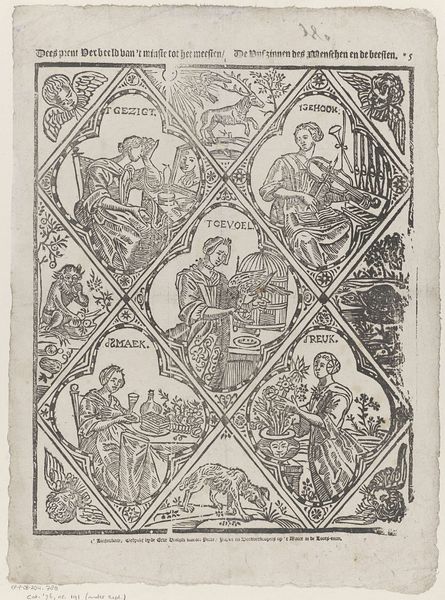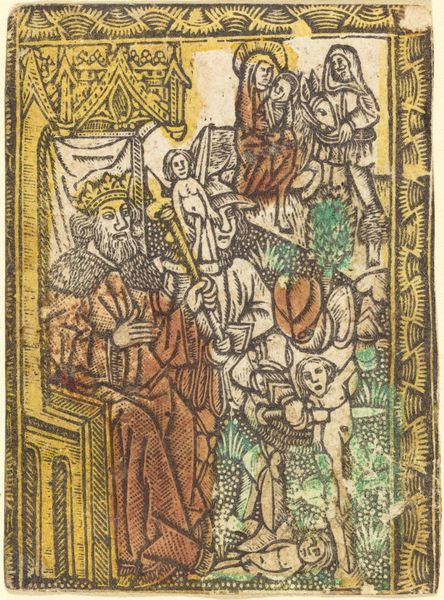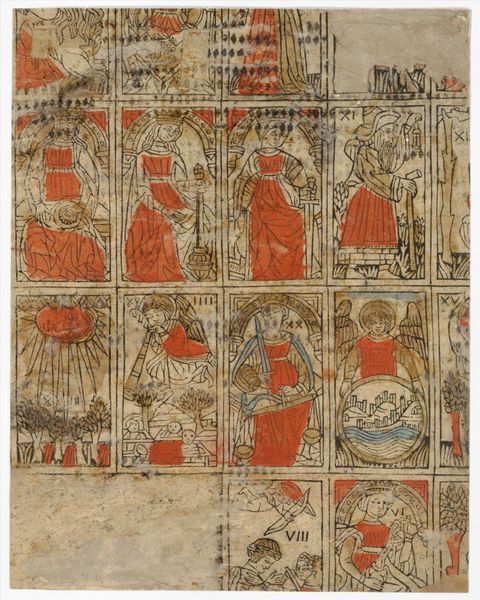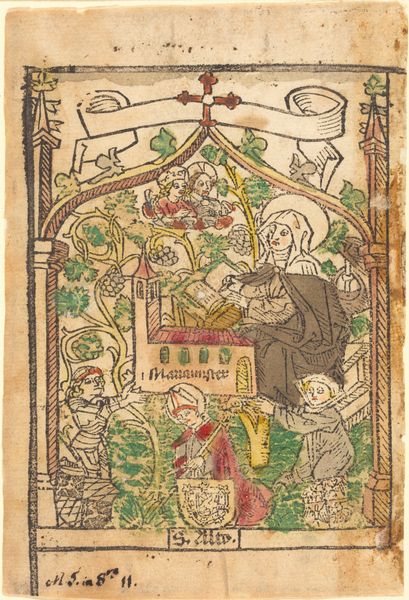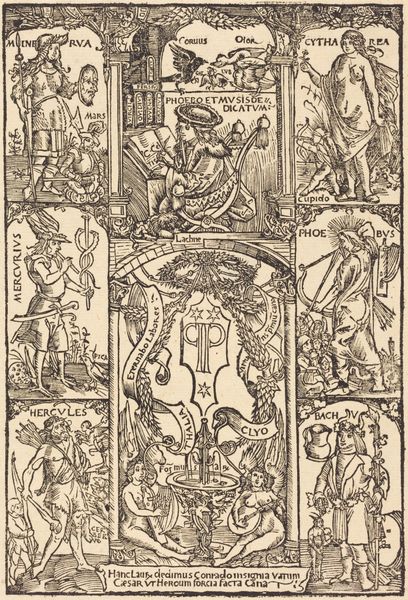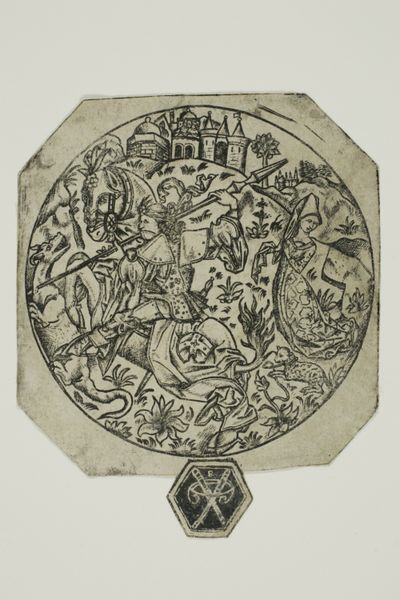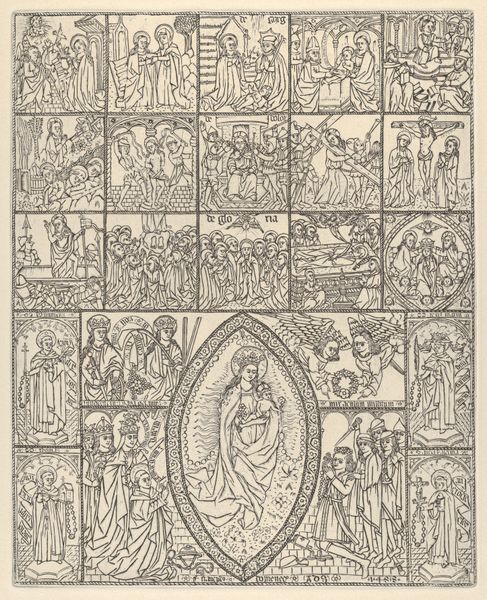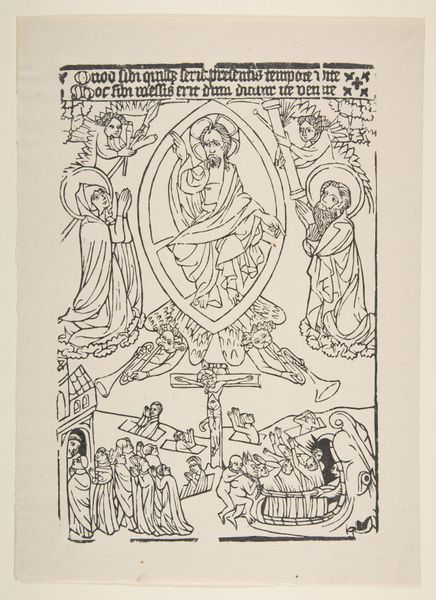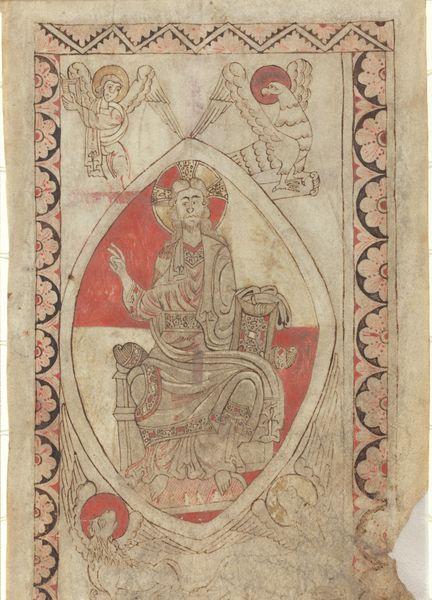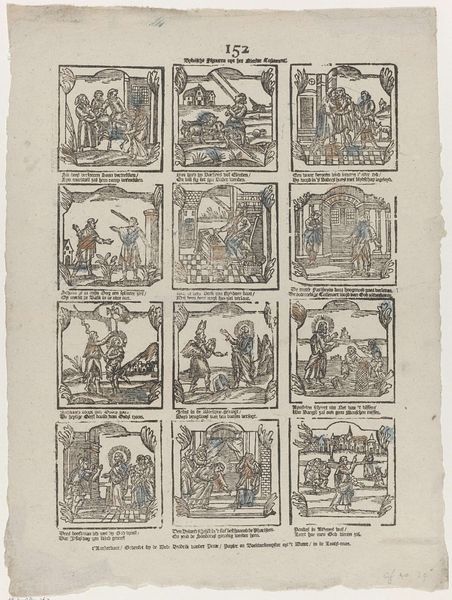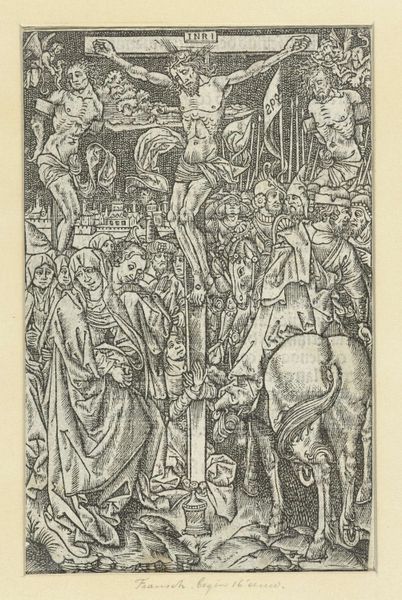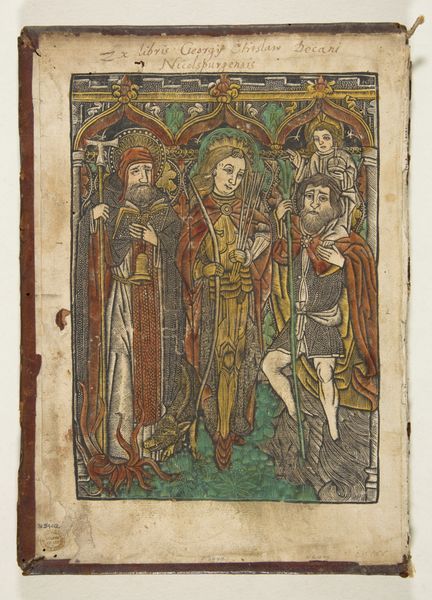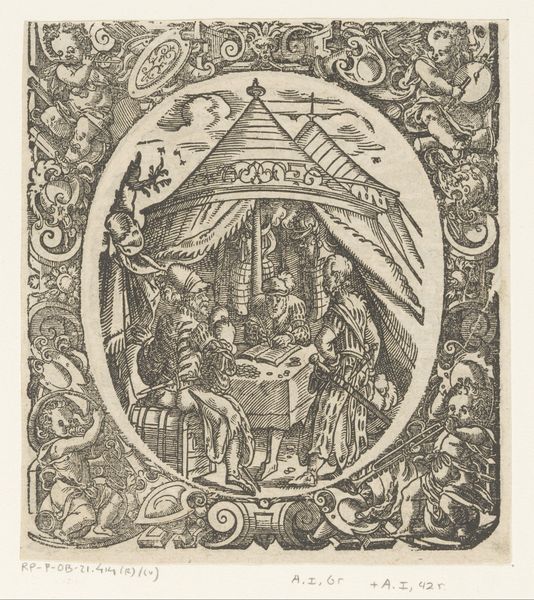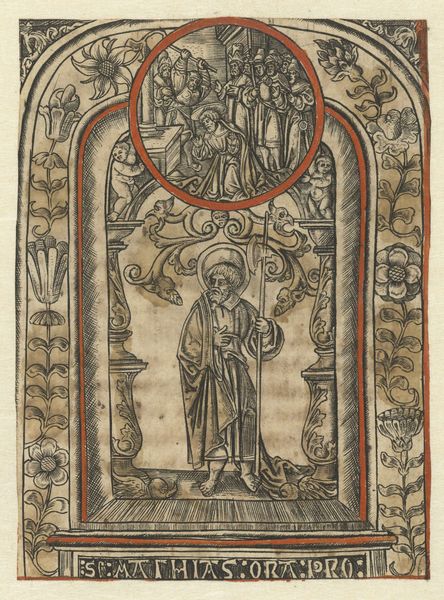
Dees prent verbeeld van 't minste tot het meesten / De vijf zinnen des menschen ende beesten 1725 - 1780
print, engraving
allegory
baroque
genre-painting
engraving
Dimensions: height 408 mm, width 307 mm
Copyright: Rijks Museum: Open Domain
Curator: This engraving from the 18th century—between 1725 and 1780 to be precise—is by Johannes (II) Kannewet. Its title is a mouthful: "Dees prent verbeeld van 't minste tot het meesten / De vijf zinnen des menschen ende beesten." Loosely translated, "This print depicts everything from the smallest to the largest / The five senses of humans and beasts." Editor: It reminds me of those old Dutch samplers—sort of folk art-ish, but with a distinct allegorical bent. There’s something immediately appealing in the almost clumsy, handmade quality of the line work. It feels…genuine? Unpretentious? Curator: It certainly doesn't have the refined elegance of some of its contemporaries, does it? But the composition itself is clever. Kannewet divides the print into diamond-shaped compartments. Each depicts a different sense: sight, hearing, touch, taste, and smell. Look, for example, at the figure gazing at a mirror for sight. Editor: Ah, yes. And next to it, the musician for "hearing". It's all laid out so rationally—compartmentalizing experience itself! Though that "touch" compartment, with the woman handling a bird in a cage… that feels less straightforward. Curator: Well, think of the act. Is it comforting? Perhaps painful? Holding the bird, understanding its presence and weight is all linked to our perception and definition of feelings in a human experience. Editor: Good point! And even the composition leans into discomfort; I’m getting dizzy following all the crisscrossing lines between compartments. The stark contrast and those oddly placed cherubic heads are slightly unnerving, and intriguing. Was Kannewet consciously commenting on the constraints placed on sensory experience? Curator: An intriguing thought. There are strong themes related to allegory, of course, common with Baroque printmaking of this kind. But the print also exists firmly in the genre of “genre painting.” Meaning, in that era, the artist also felt they were making a portrait of everyday life itself. Editor: Exactly! Seeing the senses embodied through scenes of daily existence also roots this print deeply in societal perspectives—how class, for instance, might affect sensory experience, with fine wine and lute music highlighting that not everyone experienced pleasure or pain in the same way. Curator: It leaves you wondering what the artist sought to reflect. It’s really rather thought-provoking, isn’t it? Editor: Absolutely. There's a lot more to those seemingly simple little scenes than initially meets the eye.
Comments
No comments
Be the first to comment and join the conversation on the ultimate creative platform.
